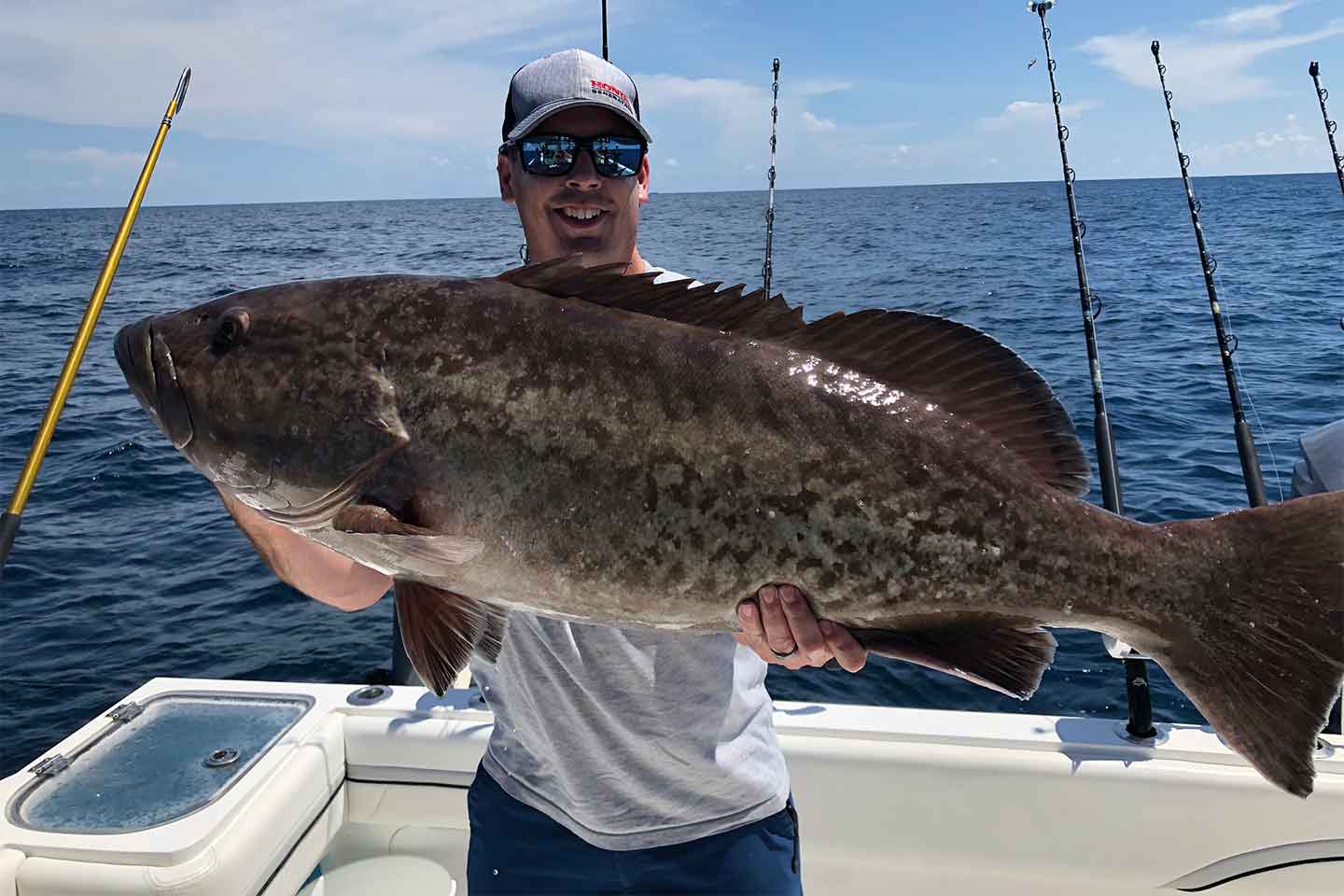
Grouper fish are fascinating creatures that inhabit the warm waters of the Atlantic, Pacific, and Indian Oceans. Known for their massive size and unique behaviors, these fish captivate both scientists and fishing enthusiasts. Did you know that some grouper species can grow up to eight feet long and weigh over 800 pounds? Grouper are also known for their incredible ability to change color and even sex during their lifetime. These fish play a crucial role in maintaining the health of coral reefs by controlling the population of smaller fish and invertebrates. Whether you're a marine biology buff or just curious about ocean life, learning about grouper will surely pique your interest. Dive into these 28 amazing facts about grouper and discover what makes them such remarkable inhabitants of our oceans.
What is a Grouper?
Groupers are fascinating fish found in warm seas. Known for their robust bodies and large mouths, these creatures are a favorite among divers and seafood lovers alike.
- Groupers belong to the family Serranidae, which includes over 400 species.
- They are typically found in tropical and subtropical waters.
- Groupers can grow to be quite large, with some species reaching up to 8 feet in length.
- These fish are known for their stout bodies and large mouths, which they use to swallow prey whole.
- Groupers are ambush predators, lying in wait for unsuspecting prey to swim by.
Habitat and Distribution
Groupers inhabit a variety of marine environments, from coral reefs to rocky bottoms. Their distribution is widespread, making them a common sight in many parts of the world.
- Groupers are commonly found in the Atlantic, Indian, and Pacific Oceans.
- They prefer habitats with plenty of hiding spots, such as coral reefs and rocky crevices.
- Some species of grouper are known to inhabit depths of up to 1,000 feet.
- Juvenile groupers often live in shallow waters, moving to deeper areas as they mature.
- Groupers are solitary fish, usually found alone except during spawning periods.
Diet and Feeding Habits
Groupers have a varied diet, feeding on a range of marine organisms. Their feeding habits are as interesting as their hunting techniques.
- Groupers primarily feed on fish, crustaceans, and cephalopods.
- They use their large mouths to create a powerful suction, drawing prey in.
- Some species of grouper are known to cooperate with other predators, such as moray eels, to hunt more effectively.
- Groupers have been observed using their pectoral fins to herd prey into a corner before striking.
- They are opportunistic feeders, eating whatever prey is available in their environment.
Reproduction and Lifespan
The reproductive habits of groupers are unique and complex. Understanding these aspects can provide insight into their life cycle and population dynamics.
- Many species of grouper are protogynous hermaphrodites, meaning they start life as females and later become males.
- Groupers typically spawn in large aggregations, often returning to the same spawning sites each year.
- Spawning usually occurs during specific seasons, often linked to lunar cycles.
- The eggs and larvae are pelagic, drifting with ocean currents until they settle in suitable habitats.
- Groupers can live for several decades, with some species known to reach ages of 50 years or more.
Conservation and Threats
Groupers face several threats in the wild, making conservation efforts crucial for their survival. These threats range from overfishing to habitat destruction.
- Overfishing is a significant threat to many grouper species, leading to declining populations.
- Habitat destruction, particularly the degradation of coral reefs, poses a major risk to grouper habitats.
- Some species of grouper are listed as vulnerable or endangered by the International Union for Conservation of Nature (IUCN).
- Conservation efforts include establishing marine protected areas and implementing fishing regulations.
- Sustainable fishing practices and aquaculture are being promoted to reduce pressure on wild grouper populations.
Interesting Facts
Groupers have some unique characteristics and behaviors that set them apart from other fish. These interesting facts highlight their distinctiveness.
- Groupers can change color to blend in with their surroundings, aiding in camouflage.
- Some species of grouper can produce sounds using their swim bladders, which are thought to be used in communication.
- Groupers have a unique ability to regenerate lost body parts, such as fins, which helps them recover from injuries.
Final Thoughts on Grouper Facts
Grouper fish are fascinating creatures with unique traits. From their impressive size to their ability to change gender, these fish are full of surprises. They play a crucial role in marine ecosystems, helping maintain the balance of underwater life. Their camouflage skills and powerful jaws make them formidable hunters. Despite their strength, many grouper species face threats from overfishing and habitat loss. Conservation efforts are essential to protect these incredible fish for future generations. Whether you're a marine enthusiast or just curious, learning about groupers gives a deeper appreciation for the ocean's wonders. So next time you dive into the sea or visit an aquarium, take a moment to admire these remarkable fish. They truly are one of nature's marvels.
Was this page helpful?
Our commitment to delivering trustworthy and engaging content is at the heart of what we do. Each fact on our site is contributed by real users like you, bringing a wealth of diverse insights and information. To ensure the highest standards of accuracy and reliability, our dedicated editors meticulously review each submission. This process guarantees that the facts we share are not only fascinating but also credible. Trust in our commitment to quality and authenticity as you explore and learn with us.
